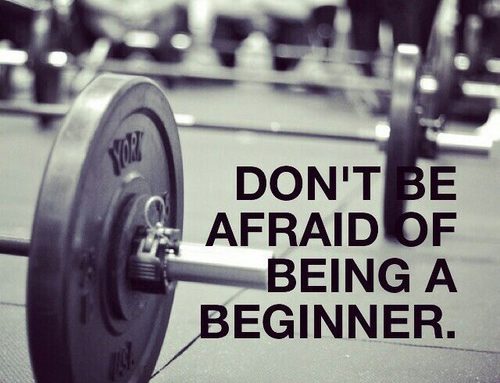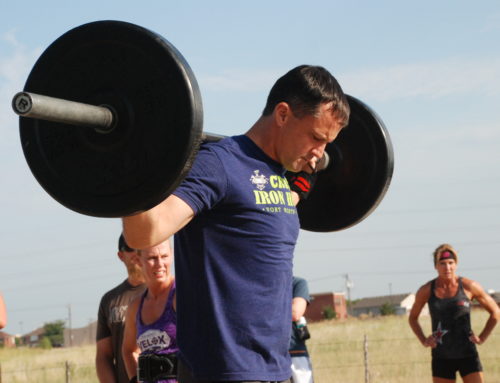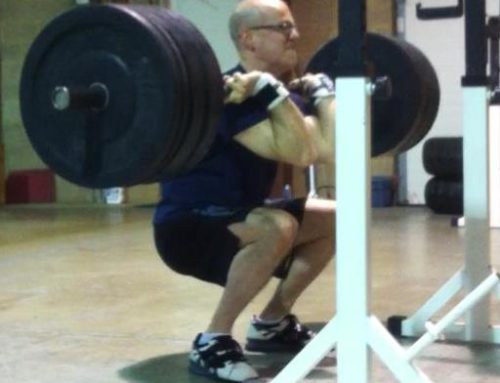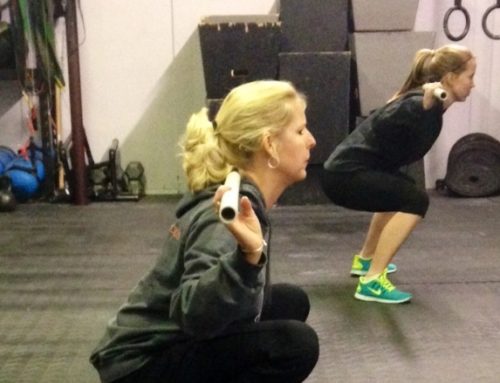I often write about trying to balance that inward desire for a constant improvement in performance and being healthy. CrossFit, like many other higher level training programs, creates incredible demands on even the youngest and strongest of bodies. So, the other day I had an in-depth conversation with a previous high level crossFitter, affiliate owner and high level college athlete. He also is in the medical profession and very knowledgable. He and I discussed where we thought crossFit was headed and what the future holds for athletes that train using CF at a higher level on a frequent basis. We both agreed that there are several parallels to higher level sports and competitive training. Our concern? The fact that many CF athletes at all age levels may not be fully aware of the pay me now, pay me later paradigm. Now, we also realize that poor fitness, lifestyle habits, and lack of exercise also produce less than favorable health statistics. So, out of our conversation, I decided to look at the health statistics, where available, of various sports and athletes.
My postulate is that individuals who engage in high level training, conditioning, ballistic jumping, lifting, running have a higher incidence of osteoarthritis and other connective tissue disorders than the normal population. Now, pay particular attention here. We don’t know at this time how to best define, “high level training.” But I am proposing that if you train frequently with olympic lifting, running, crossFit, and other barbell lifts, you may fall into this category, especially if you are not undulating and periodizing your training for rest or tapering periods. In further conversation with this individual, we discussed how it may not be the competition that causes the greatest amount of damage, but the constant high level conditioning that most CF athletes employ that definitely parallels the intensity and frequency of professional athletes. If you don’t believe so, google professional athlete performing crossFit workouts, and see how CF can stress even the highest level of conditioned athlete.
Several studies have presented a higher incidence than normal in osteoarthritis than the normal or control populations.1,2,3 This was true for both contact and non-contact sports and training.
Several studies on runners, showed a higher incidence of joint, connective tissue and cardiac problems than the normal population. The incidence increased as the volume increased and adequate recovery was not adhered to.7,8,9,10
Other numerous studies have shown that high level sports and training increase the incidence of osteoarthritis and future joint pathology in both men and women in comparison to controls. Again, this higher incidence was associated with higher level training and competition and not moderate exercise. 11
So, does this mean you need to stop crossFitting, olympic lifting, barbell lifting, running or training at a higher level? I don’t think anyone has the exact answer to that question. But I will propose that training at a high level of performance year round will increase the risk to long term poorer health factors and increased incidence to the problems presented above. I also think that there is no way that anyone can prove otherwise at this time! When CF first was developed, the focus was on GPP (general physical preparedness) and general fitness. Now, in this world of competition, more and more boxes are training their general membership as if their about to compete. This may be a HUGE mistake!
Here are some suggested methods to reduce the incidence of these future health problems;
1. Injury avoidance. Avoid injuries in training and in sport. Take your time progressing in training and don’t be stupid! Train with your brain first and ego second. Never try a lift, movement that you “know” you’re not ready for! You can always try again, but not if you are sidelined with a debilitating joint injury. It drives me crazy to see athletes being told, just foam roll it out or stretch. Some problems don’t get better with less methods! Bad joints are bad joints! 4
2. Choice of sport. Choose to be involved in less ballistic training on a regular basis and undulate your training to support rest/recovery cycles throughout the year. Avoid as much pounding as possible and perform alternate movements when available which may have just as much training effect. Contact sports have a higher incidence of these problems than non-contact sports. I also recently held off on registering for a competition until they posted the workouts. You can’t always do that, but in this particular competition they were posting them 3 weeks in advance. My friends were promoting me to register early. They are also 20 and 30 something! I wanted to make sure there was nothing in the workouts that I thought would propose to great of risk. Call me a puss, but I want to maintain the highest level of performance for as long as possible, not one day! 5
3. Improved conditioning. Again, be smart. Find a good well-balanced coach that has a solid training background, experience and slightly rogue in their thinking against the norm! Use the science of training to get the greatest ROI with the least risk when training throughout the year.
4. Supplementation. Use a quality low sugar diet, vitamins, minerals and lots of water. 6
References
- Br J Sports Med 2000 Oct;34(5):332-6
- Br J Sports Med 2001 Dec;35(6):402-8
- Br J Sports Med 1997 Jun;31(2):132-4
- Am J Sports Med 1984 Jul- Aug;12(4):298-300
- Acta Orth Scan 75: 34-39
- Lancet 2001 357:251-256
- Lore of Running (4th edition) Noakes T, Human Kinetics 2003
- Med Sci Sports Exerc 2003 Oct;35(10):1679- 83
- Noakes as above p867
- Med Sci Sports Exerc 2000 Jun;32(6):1067-72
- http://www.ncpad.org/107/828/Osteoarthritis~and~Exercise






Interesting Coach. We’re so lucky to have a coach staff with so much insight.
GREAT article. I follow a well programmed schedule but failed to listen to the coach who said a week rest. I did not listen, was doung a wrkout and in the first burpee i tore a calf muscle. The CF Gods were reminding me to LISTEN TO THE COACH and REST!!! The injury sux but relatively speaking isnt bad an has humbled me. Thanks for what u do!
Great article D. This sums up all conversations we’ve had, with a heartfelt concern for what is right— rather than what is popular!
I agree wholeheartedly with your premis.
Respectfully,
Coach G
Please send me your thoughts on Dry Needling.
Thanks G. Dry needling works if used correctly. But just like any intervention, it doesn’t work on everyone. I use it for several reasons; pain management, reduction of mm spasm, trigger point therapy, improving healing to soft tissue, tendinitis, improving mm excitation, etc… What diagnosis and area are you considering dry needling?